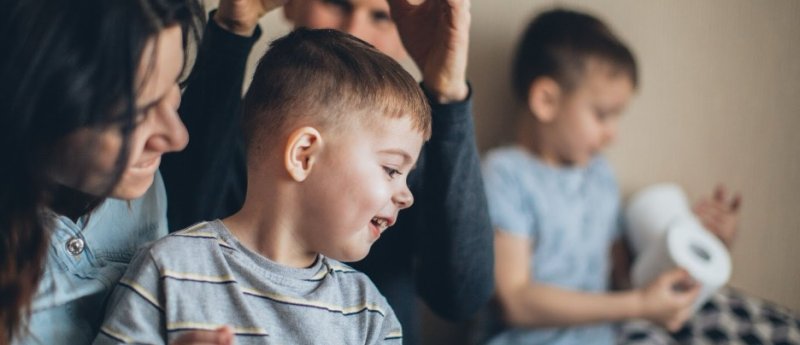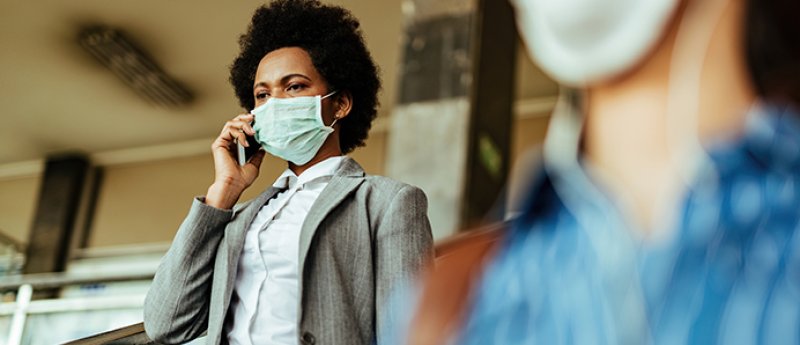 COVID-19
COVID-19
-
Turning research into actionToward Equity: After a Decade of Progress, Gaps in Access to Paid Sick Leave Remain
The importance of paid sick leave has been underscored like never before in the wake of the COVID-19 pandemic. As the world grappled with the challenges of a global health crisis, the simple act of staying home when feeling unwell became a critical strategy in curbing the spread of the virus.
May 6, 2024
|P4A Spark
| -
 Turning research into actionWe Should Learn from the Pandemic and Establish Direct Cash Payments to Moderate the Next Recession
Turning research into actionWe Should Learn from the Pandemic and Establish Direct Cash Payments to Moderate the Next RecessionIn the throes of the coronavirus pandemic, US policymakers came together across both sides of the aisle and provided the American people with nearly $1 trillion in direct cash payments to help them make it through the emergency. Along with the expanded Child Tax Credit, these payments dramatically reduced poverty, stabilizing families and our economy during a time of unprecedented turbulence.
January 31, 2024
|P4A Spark
| -
When schools across the country closed to in-person learning because of the coronavirus pandemic, millions of students lost access to free and reduced-price lunches. In response, states have begun providing emergency benefits through the federal Pandemic Electronic Benefit Transfer (P-EBT) program, which allows eligible school children to receive temporary emergency nutrition benefits through EBT cards that are used to purchase food. To help key decision-makers, researchers released a guide summarizing key components of approved plans and track implementation options and execution.
September 21, 2021
|P4A Spark
| -
 Turning research into actionBuilding an Inclusive Pandemic Recovery for All
Turning research into actionBuilding an Inclusive Pandemic Recovery for AllThe COVID-19 pandemic has exacerbated racial, ethnic, and gender disparities that have existed since long before the current public health crisis. With declining infection rates and increasing vaccination rates, the United States seems to be on a path to recovery.
June 24, 2021
|P4A Spark
| -
 Turning research into actionA New Era Built on Actionable Policy-Oriented Evidence
Turning research into actionA New Era Built on Actionable Policy-Oriented EvidenceTwo pandemics upended our nation this year. The novel coronavirus (COVID-19) continues to sicken, kill, and reshape the lives of people everywhere, and is also testing our nation’s healthcare, public health, education, and social protection systems like never before. The second pandemic is one that has been with us since well before our nation’s founding but has come into much sharper focus this past year.
January 29, 2021
|P4A Spark
| -
In mid-December, health care workers across the United States began to receive a COVID-19 vaccine. These workers have faced constant exposure to COVID-19 as they’ve struggled to provide care amid the pandemic, making them the top priority for receiving the vaccine.
January 25, 2021
|P4A Spark
| -
Since the beginning of the pandemic, workers in essential industries needing to work in person continued going to work and keeping the nation running while risking exposure to the novel coronavirus. And as states reopened, many nonessential workers returned to work, risking exposure to the virus to allow people to shop in stores, eat in restaurants, and obtain personal services.
December 2, 2020
|P4A Spark
| -
This analysis examines whether the coronavirus disease 2019 (COVID-19) emergency sick leave provision of the bipartisan Families First Coronavirus Response Act (FFCRA) reduced the spread of the virus. Using a difference-in-differences strategy, we compared changes in newly reported COVID-19 cases in states where workers gained the right to take paid sick leave (treatment group) versus in states where workers already had access to paid sick leave (control group) before the FFCRA.
October 15, 2020
|P4A Spark
| -
Massachusetts has one of the highest cumulative incidence rates of coronavirus disease 2019 (COVID-19) cases in the US. Understanding which specific demographic, economic, and occupational factors have contributed to disparities in COVID-19 incidence rates across the state is critical to informing public health strategies.
August 27, 2020
|P4A Spark
| -
COVID-19 has had a devastating impact on the economic security and well-being of families. Since March, the economy has shed more than 13.3 million jobs – 55 percent of them lost by women – triggering widespread unemployment and sharp declines in household incomes. In mid-May 2020, almost 21 million people were unemployed. At 51.4 percent, women make up majority of those out of work or seeking employment—a historic first for the nation.
August 20, 2020
|P4A Spark
|